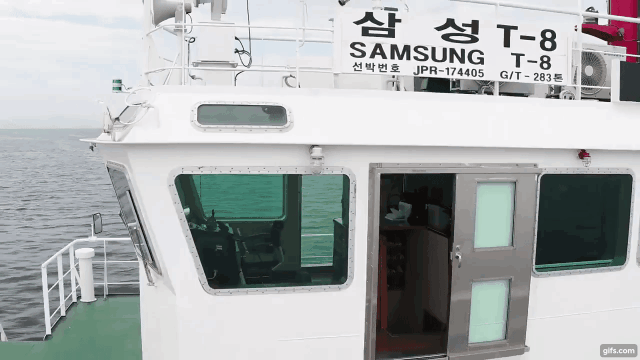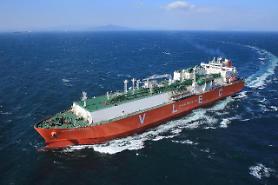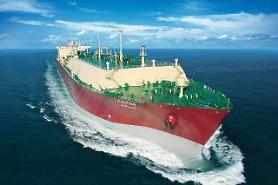
[Samsung Heavy Industries YouTube channel]
SEOUL -- Without direct human intervention, a 300-ton tug boat installed with self-sailing equipment changed its course to avoid collision with another boat coming across from the front in waters near South Korea's southern island of Geoje. The autonomous operation was supervised through the screen of an inland control tower that displayed a 360-degree view.
The scene was highlighted in a video released by Samsung Heavy Industries (SHI), a major shipbuilder based in Geoje, which claimed to be the first mover in South Korea to successfully test the remote autonomous operation of an actual ship at sea.
The tug equipped with a remote autonomous system called Samsung Autonomous Ship (SAS) returned safely around a destination about 10 kilometers (6.2 miles) away without human intervention, SHI said. The boat avoided other ships or obstacles that appeared within a radius of one kilometer.
SAS can recognize surrounding vessels and obstacles while assessing the risk of collision to find an optimal route. "SAS is a safe operation solution that reduces the crew burden by allowing ships to find optimized routes and navigate autonomously," SHI's research institute head Shim Yong-rae, vowing to commercialize an advanced system combined with artificial intelligence and high-speed communication technology in 2022.
A remote control system was demonstrated through a control center in the central city of Daejeon using new technologies such as an augmented reality video and a 360-degree view that allows the monitoring of ships while watching videos like looking down directly from the sky. If direct control is needed, the control center operates the vessel in real-time through a 5G network.
The International Maritime Organization (IMO), a U.N. maritime safety agency, has adopted mandatory energy-efficiency measures to reduce emissions of greenhouse gases from ships. IMG regulations will increase the preference for digital total solutions that support efficient navigation systems.
SHI has partnered with DNV GL, an international accredited registrar and classification society headquartered in Norway, to develop smart ship technology that can revolutionize the landscape of ship design and operations. Smart shipping can be divided into unmanned ships ruled by an operator from a control center onshore and autonomous ships that use a computer on board that takes decisions about the route, speed, fuel consumption, maintenance and even mooring in the harbor.
Copyright ⓒ Aju Press All rights reserved.



